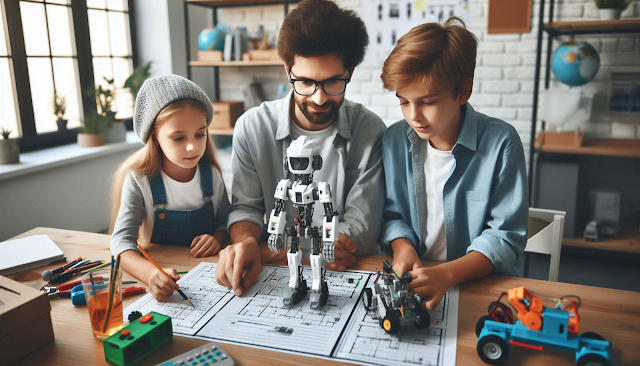Robot vs. Machine: What Makes a Robot a Robot?
Embarking on the robotics journey often leads to an intriguing question: What exactly makes a robot distinct from other machines? This blog aims to simplify and clarify the unique characteristics that define a robot.
Machines: A machine is a system designed to perform a specific task. This can range from simple tools like a screwdriver to complex systems like cars. Machines typically operate on a set of sequences of action and do not possess the ability to adapt to their environment, which is why they require human control or supervision.
Robots: The essence of a robot lies in its interaction with the world. Unlike machines, robots follow a cyclical process of ‘Sense, Think, and Act.’ A robot begins by sensing its environment through sensors. It then processes the data to make decisions and carries out actions using actuators.
To illustrate, let’s consider a self-driving car:
Sense: LiDAR sensors measure the distance from objects ahead.
Think: The car processes this data to determine if there’s an obstacle in its path and decides whether to stop or slow down.
Act: Commands are sent to the motor to adjust the speed or to stop the car.
This continuous cycle of sensing, decision-making, and action is what characterizes a robot’s operation.
Let’s highlight the key differences between machines and robots:
Autonomy: Machines require human intervention to operate, while robots function autonomously, often without human supervision.
Complexity: Machines are designed for specific tasks, which can be simple or complex. Robots, however, are capable of performing multifaceted tasks that require cognitive abilities like decision-making and adapting to environmental changes.
Intelligence: Machines follow pre-programmed instructions and cannot learn or adapt. Robots, on the other hand, can learn from experiences, analyze data, make decisions, and adapt to new situations.
Mobility: Machines are generally stationary or have limited mobility. Robots can exhibit diverse forms of mobility, depending on their design and purpose.
For example, everyday machine applications include household appliances like washing machines, refrigerators, and coffee makers. In contrast, robotics applications in daily life include robotic vacuum cleaners, personal assistant robots, and autonomous lawnmowers.
While every robot is a machine, not every machine is a robot.
.png)
.png)
.png)

Comments
Post a Comment